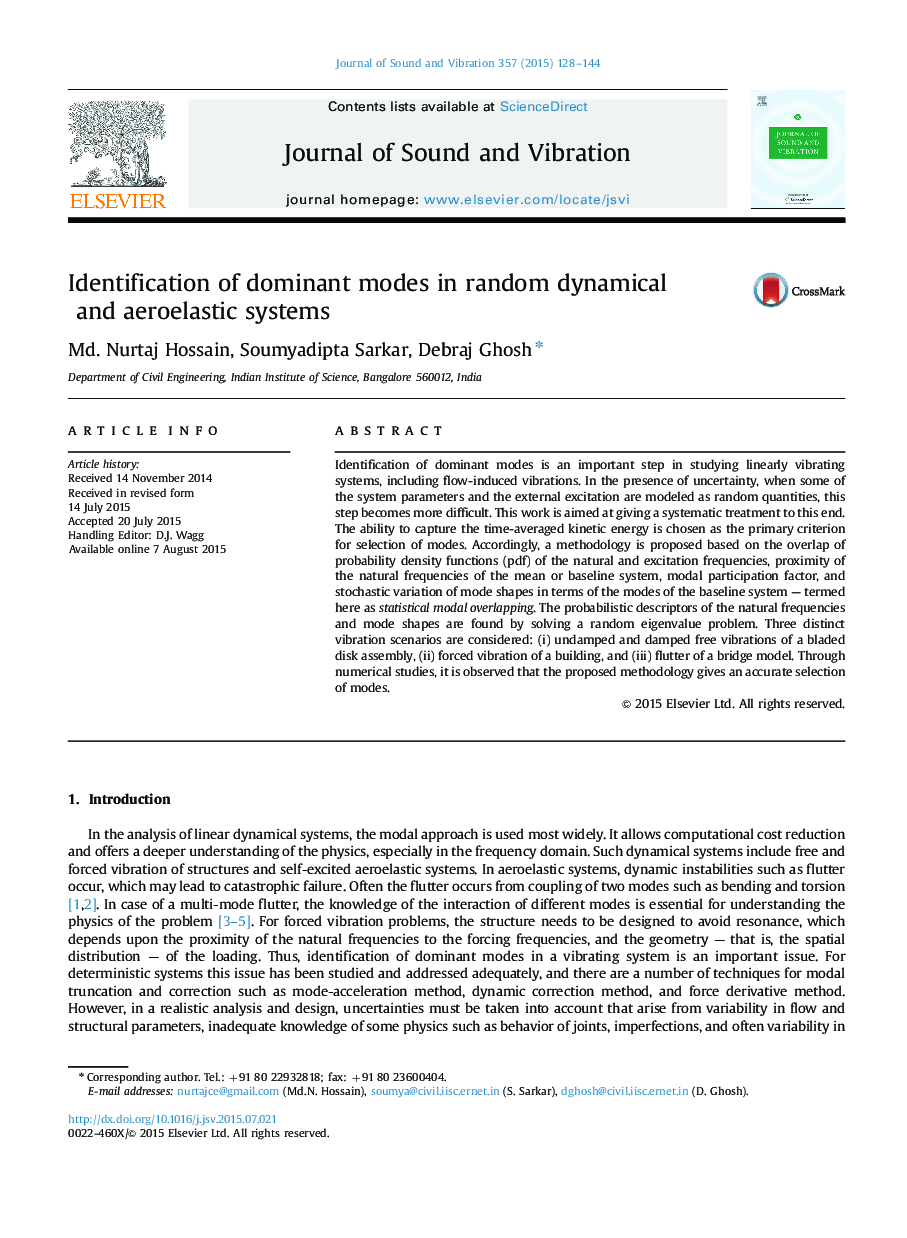| Article ID | Journal | Published Year | Pages | File Type |
|---|---|---|---|---|
| 6755133 | Journal of Sound and Vibration | 2015 | 17 Pages |
Abstract
Identification of dominant modes is an important step in studying linearly vibrating systems, including flow-induced vibrations. In the presence of uncertainty, when some of the system parameters and the external excitation are modeled as random quantities, this step becomes more difficult. This work is aimed at giving a systematic treatment to this end. The ability to capture the time-averaged kinetic energy is chosen as the primary criterion for selection of modes. Accordingly, a methodology is proposed based on the overlap of probability density functions (pdf) of the natural and excitation frequencies, proximity of the natural frequencies of the mean or baseline system, modal participation factor, and stochastic variation of mode shapes in terms of the modes of the baseline system - termed here as statistical modal overlapping. The probabilistic descriptors of the natural frequencies and mode shapes are found by solving a random eigenvalue problem. Three distinct vibration scenarios are considered: (i) undamped and damped free vibrations of a bladed disk assembly, (ii) forced vibration of a building, and (iii) flutter of a bridge model. Through numerical studies, it is observed that the proposed methodology gives an accurate selection of modes.
Related Topics
Physical Sciences and Engineering
Engineering
Civil and Structural Engineering
Authors
Md. Nurtaj Hossain, Soumyadipta Sarkar, Debraj Ghosh,
